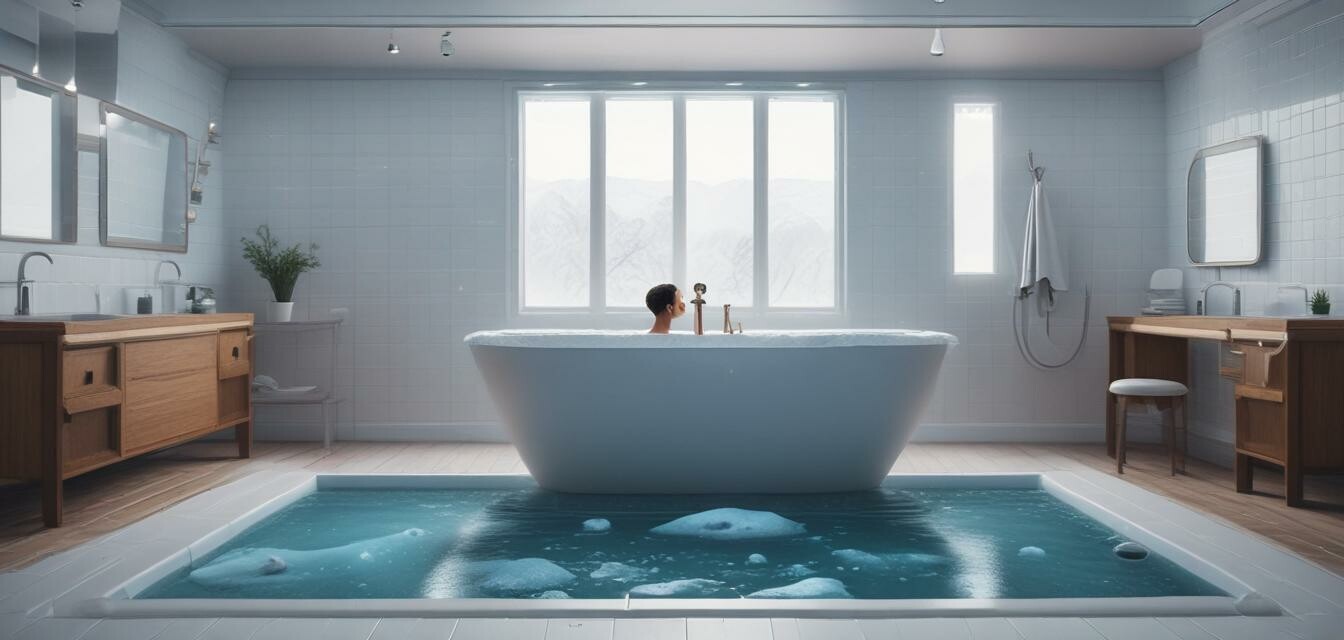
Ice Bath vs. Contrast Therapy: What You Should Know
Key Takeaways
- Ice baths and contrast therapy are popular recovery methods.
- Each method has unique benefits and best practices.
- Understanding your personal goals can help you choose the right therapy.
- Both methods can be implemented at home for convenience.
- Research and gather information to optimize your recovery routines.
In the world of fitness and recovery, two popular methods stand out: ice baths and contrast therapy. Both methods have garnered significant attention for their potential benefits in helping athletes recover after intense workouts. But, what are the differences between them, and how can you determine which method is best suited for your needs? In this article, we explore the comparison between ice baths and contrast therapy, detailing their benefits, best practices, and tips for home setups.
What is an ice bath?
An ice bath involves immersing the body in cold water, usually between 50°F to 59°F (10°C to 15°C), for a set duration. This technique is often followed by athletes after rigorous training sessions to aid in recovery.
Benefits of ice baths
- Reduces inflammation and muscle soreness.
- Helps to lower core body temperature.
- Potentially increases circulation post-session.
What is contrast therapy?
Contrast therapy alternates between hot and cold water immersion. Typically, participants may spend a few minutes in warm water (around 100°F or 37°C) followed by cold water immersion. This cycle is repeated several times during a session.
Benefits of contrast therapy
- May improve circulation and vascular function.
- Helps to reduce muscle fatigue and soreness.
- Can be relaxing and enjoyable, promoting overall well-being.
Comparison of ice baths and contrast therapy
| Feature | Ice Bath | Contrast Therapy |
|---|---|---|
| Temperature | Cold (50°F to 59°F) | Alternating hot and cold |
| Duration | Typically 10-15 minutes | 10-30 minutes, alternating |
| Ease of setup | Requires ice and a tub | Requires access to both hot and cold water |
| Sensation | Cold shock, pain relief | Relaxing and stimulating |
| Focus area | Localized recovery | Full body recovery |
Choosing the right recovery method
The choice between ice baths and contrast therapy largely depends on personal preference and specific recovery goals. Here's a brief guide to help you decide:
- If you’re simply looking for deep muscle recovery, ice baths might be the best choice.
- If you enjoy a more dynamic approach and a mix of sensations, contrast therapy may be for you.
- Consider experimenting with both methods to find what works best for your body.
Setting up your DIY ice bath
Setting up a DIY ice bath at home is straightforward. Here are some tips:
DIY Ice Bath Setup Tips
- Choose a large container or tub that can comfortably fit your body.
- Fill it with cold water and add ice to reach the desired temperature.
- Consider using a thermometer to monitor the water's temperature accurately.
- Always have a timer or watch on hand to track your immersion time.
- Make sure the area is safe and accessible.
Best practices for contrast therapy
To get the most out of contrast therapy, here are some guidelines:
- Start with warm water to help relax muscles before transitioning to cold.
- Typically, spend 3-5 minutes in each temperature before alternating.
- This therapy can be performed in a regular bath or shower, making it versatile.
- Close your eyes and breathe deeply to enhance relaxation.
- Drink water or a sports drink post-session to rehydrate.
Final thoughts
Both ice baths and contrast therapy offer recovery benefits that can enhance your fitness journey. Understanding your preferences and goals can guide you in choosing the right method for your needs. Remember to experiment with each as part of your routine, and find what feels best for your body.
Pros of Ice Baths
- Effective for muscle recovery
- Simple to set up
- Quick immersion time
Cons of Ice Baths
- Can be uncomfortable initially
- Requires a consistent supply of ice
Pros of Contrast Therapy
- Stimulating and refreshing sensation
- May enhance circulation
- Can be performed in a shower or bath
Cons of Contrast Therapy
- Less straightforward to set up
- Requires access to both hot and cold water
Learn more
For more guidance on setting up your recovery methods, check out our other resources:
